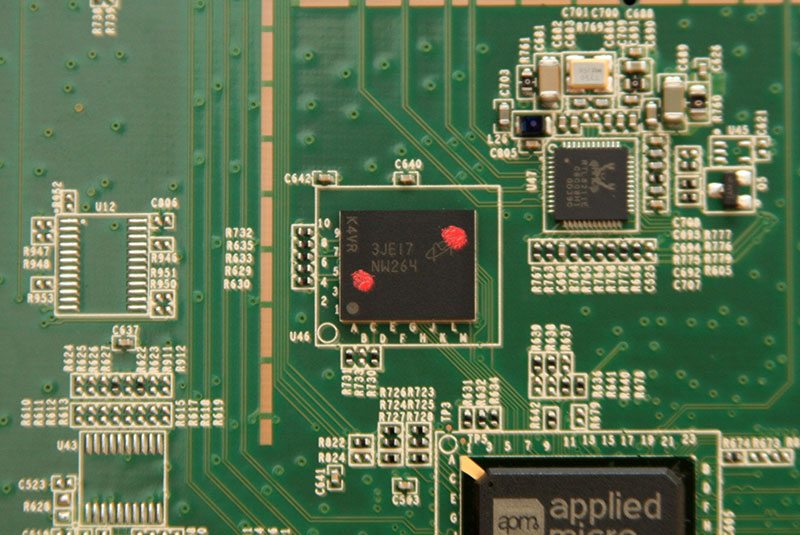Thecus N2310 2-bay Intelligent NAS Review
Chris Hadley / 11 years ago
A Closer Look
When I look at any NAS, particularly on the SOHO end of the scale, I always take a look at the intended user base for the system. Are sleek looks with hidden drives the main focus, or has every connectivity option been thrown in to the product to cater for every users potential needs? The N2310 is not really either of these; its simple, to the point design may not be winning any designer awards any time soon, although a glossy plastic panel that runs up and over the middle of the chassis does break up the matte black front panel. The small footprint that is given makes the system easy to position on a desk or next to a router and out-of-the-way.
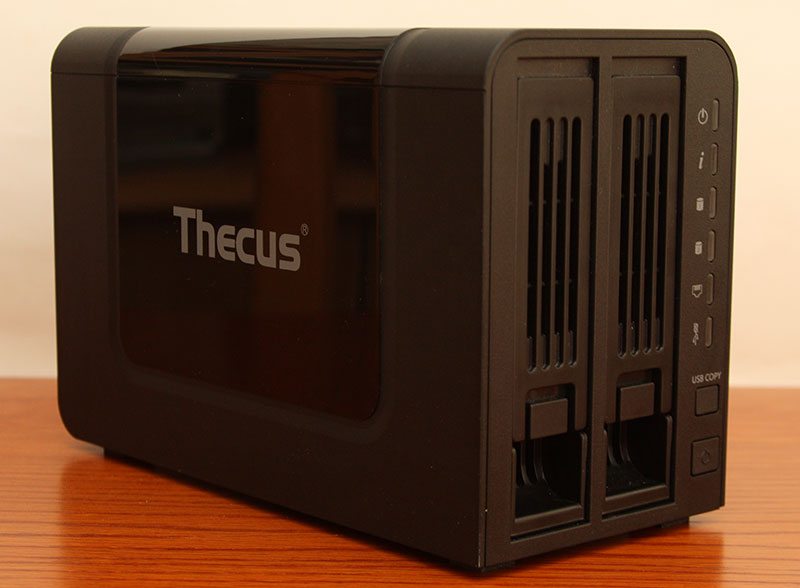
The two drive bays are easy to access from the front of the chassis with a simple plastic latch holding them in place. Down the right hand side of the drive bays sits a line of LEDs for power, system status, drive, USB and LAN activity, topped off with a one-touch USB copy and power button at the bottom.
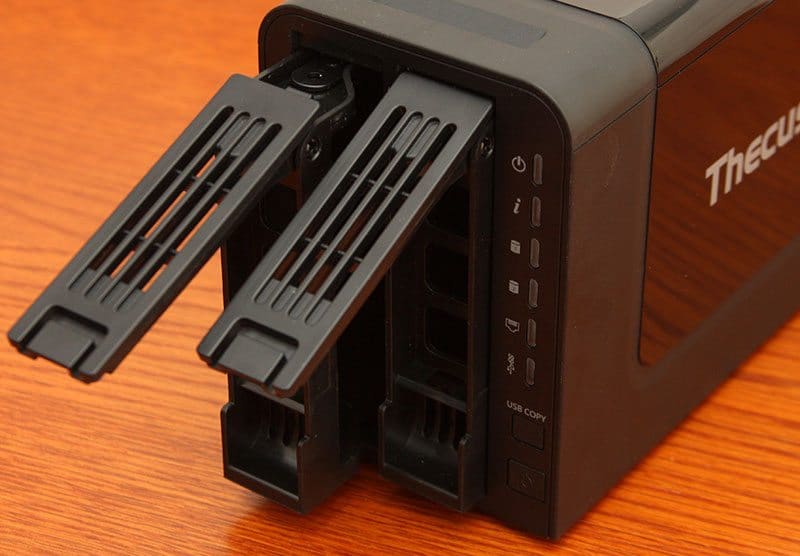
The rear of the N2310 and the connectivity options on offer are also short and to the point. Alongside a single Ethernet port and one each of USB2.0 and USB3.0, a small reset button, Kensington lock point and DC power jack are to hand.
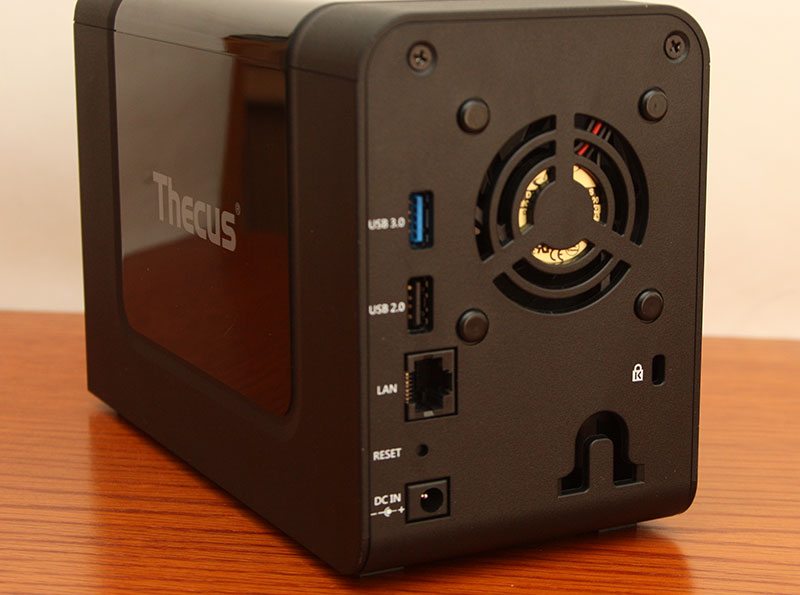
Towards the bottom right of the back panel is a U-shaped cut out that serves one very simple, yet surprisingly useful purpose; saving the power cable from being pulled out accidentally. It may look like a trivial addition, but you’ll be surprised at the number of times a lose power connection has users stumped when they are faced with no connectivity.
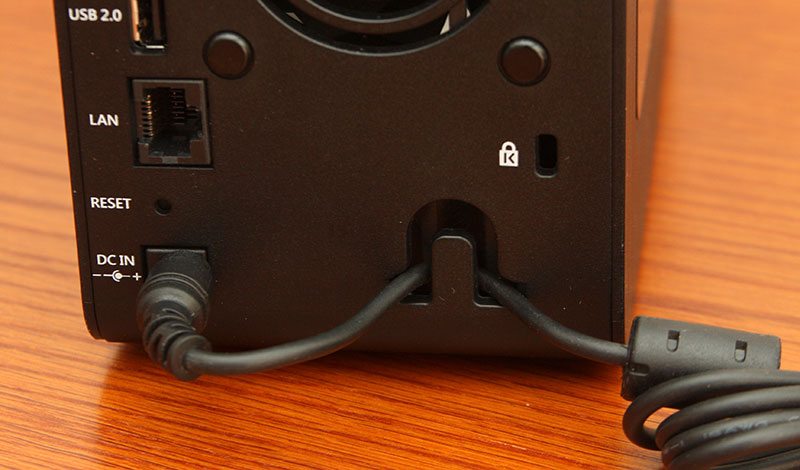
On the underside of the body are four rubber feet and a label with the systems serial number and MAC address for reference.
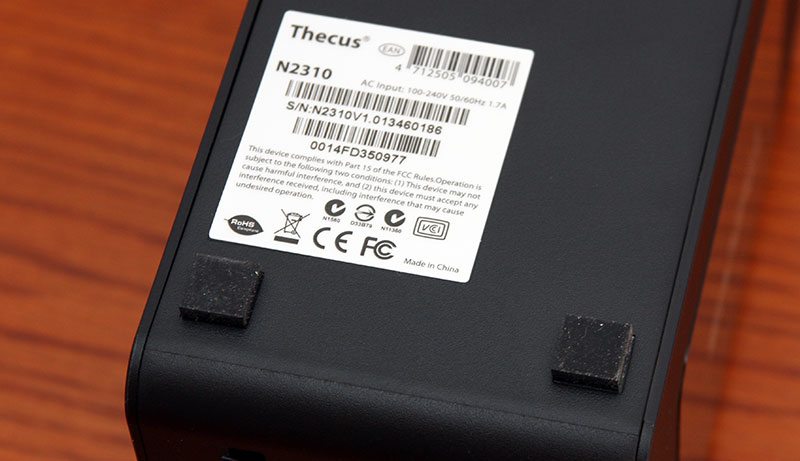
The drive trays are made out of lightweight plastic with support for both 2.5″ and 3.5″ drives as we would expect. Along each side of the drive tray are two plastic bulges the protrude from the normal dimensions of a drive tray. Although a strange feature, these extra additions help to hold the drive tray in place once installed.
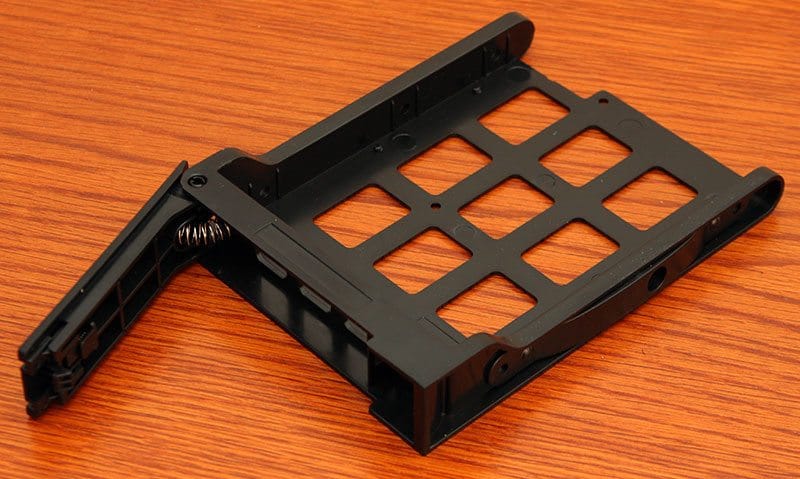
Opening up the N2310’s body (take note that this will void your warranty) and having a peek inside, at the rear of the system we find a small 60mm fan sat behind the SATA daughter board for the drives to dock onto.
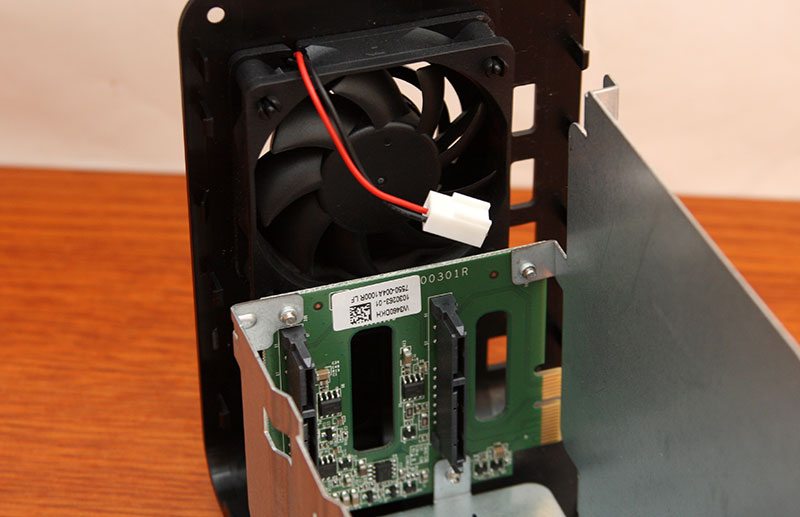
Starting off with the rear of the motherboard for a change, there is very little going on in the respect of major components. Aside from the system battery, there are a few switches and LEDs for the front panel.
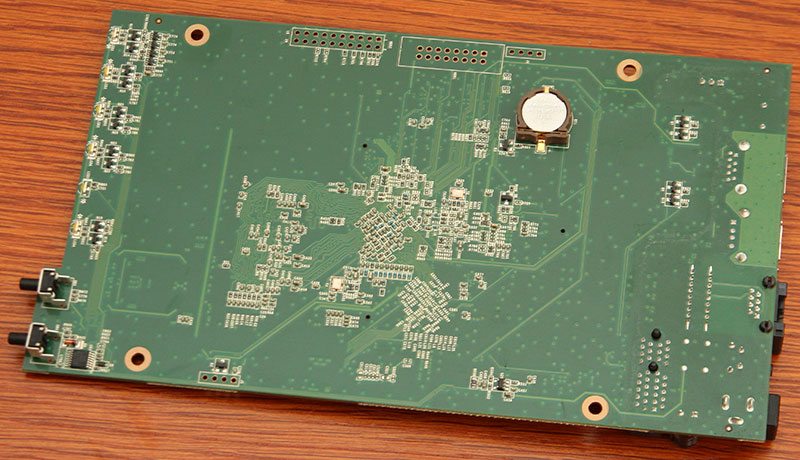
The two push button switches that are sat towards to bottom of the board correspond to the USB and power buttons on the front of the chassis, whilst the six SMB LEDs are for the drive and system status.
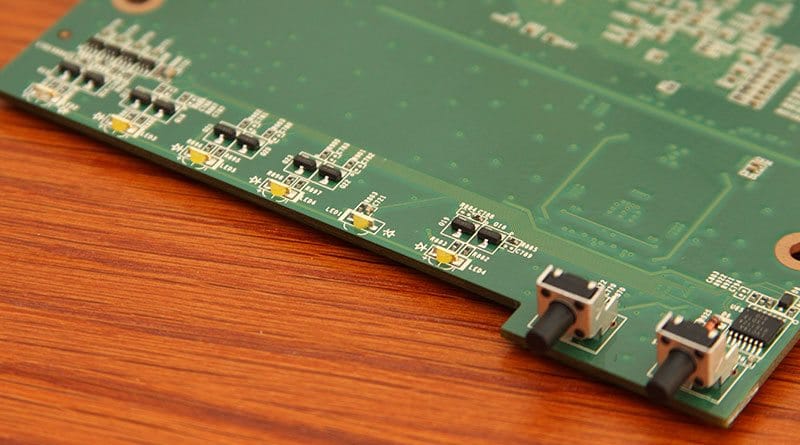
Over on the other side of the motherboard there is considerably more going on in terms of components. Down the left hand side of the board as we see it are the ports for the rear I/O, with a PCIe x1 header tucked just behind them for the SATA daughterboard.
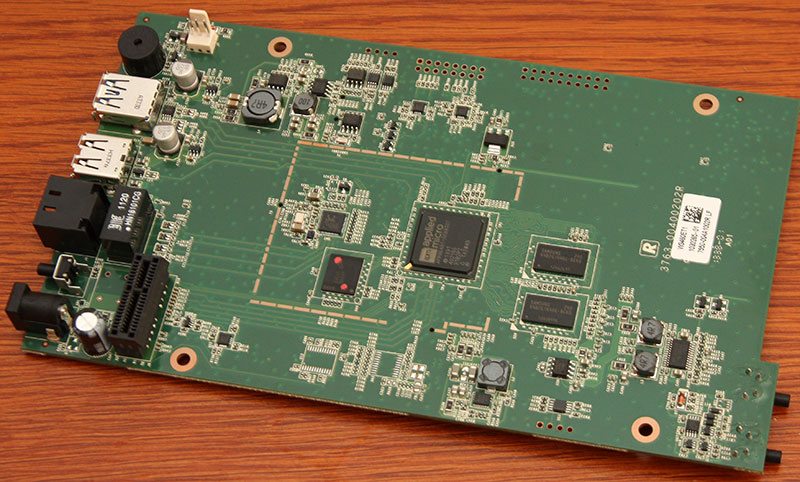
Sat at the heart of the N2310 is a single core SoC from Applied Micro. Clocked at a seemingly slow 800MHz, the APM86491 chip not only plays home to the processor, but also the USB3.0 controller, SATA controller, support for 1066MHz DDR3 memory and in other revisions support for a variety of network interfaces. Rounding this wide capability off with a typical power consumption of only 2.5W and we have a small package that is just right for the product in hand.
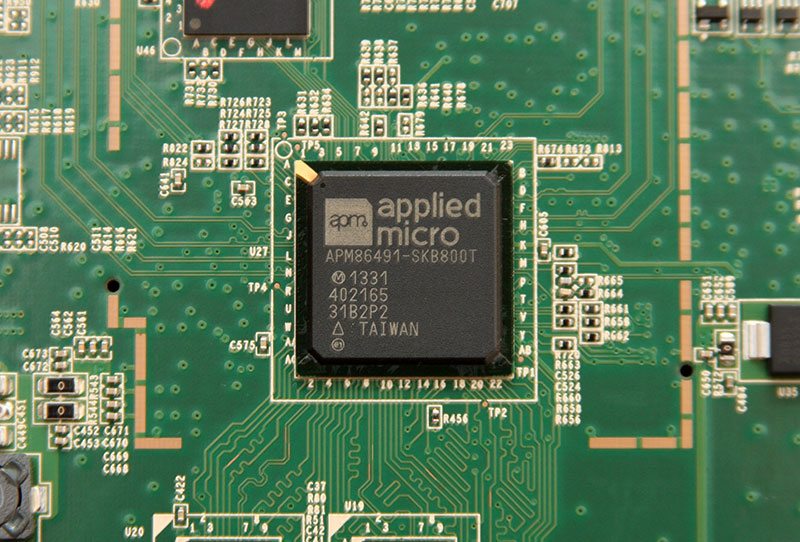
Set beside the controller are two Samsung branded K4B2G1646E-BCK0 DDR3 packages, providing 512MB of RAM to the SoC.
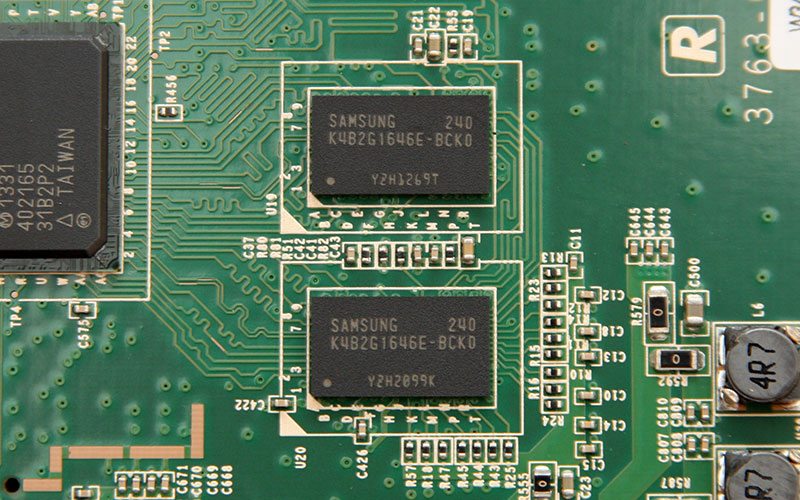
On the other side of the SoC are two more small ICs which make up the bulk of the systems specifications. Although the SoC is capable of driving an Ethernet controller by itself, a Realtek LAN controller has been selected in favour of lower operating temperatures; which are vital since there is no heatsink to be found. Finally a Micron NW264 marked NAND package provides 256MB of flash memory to the system.
